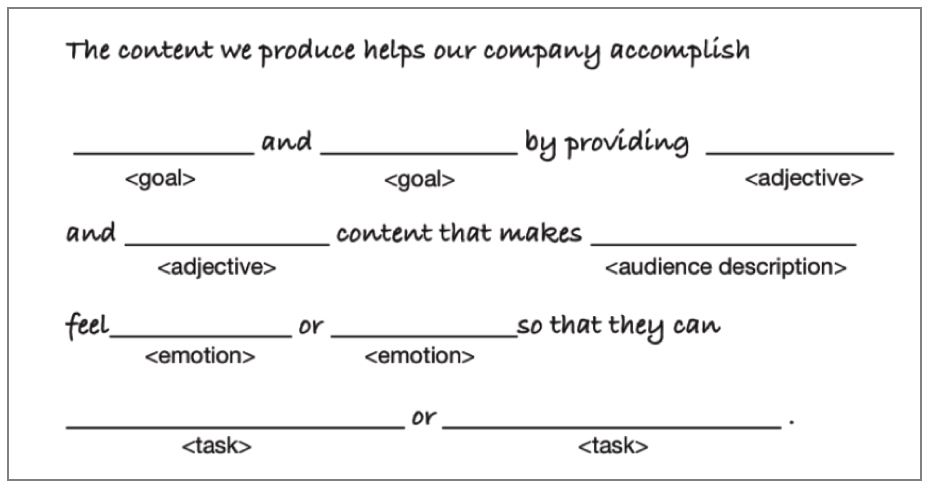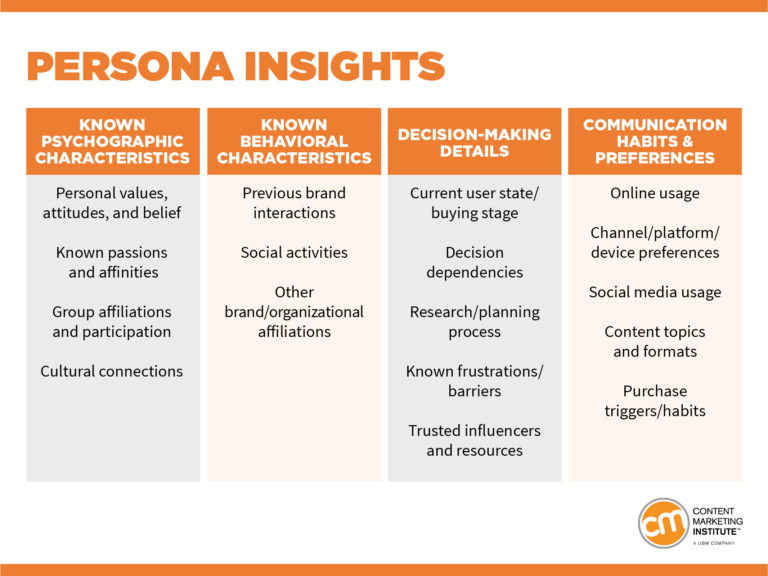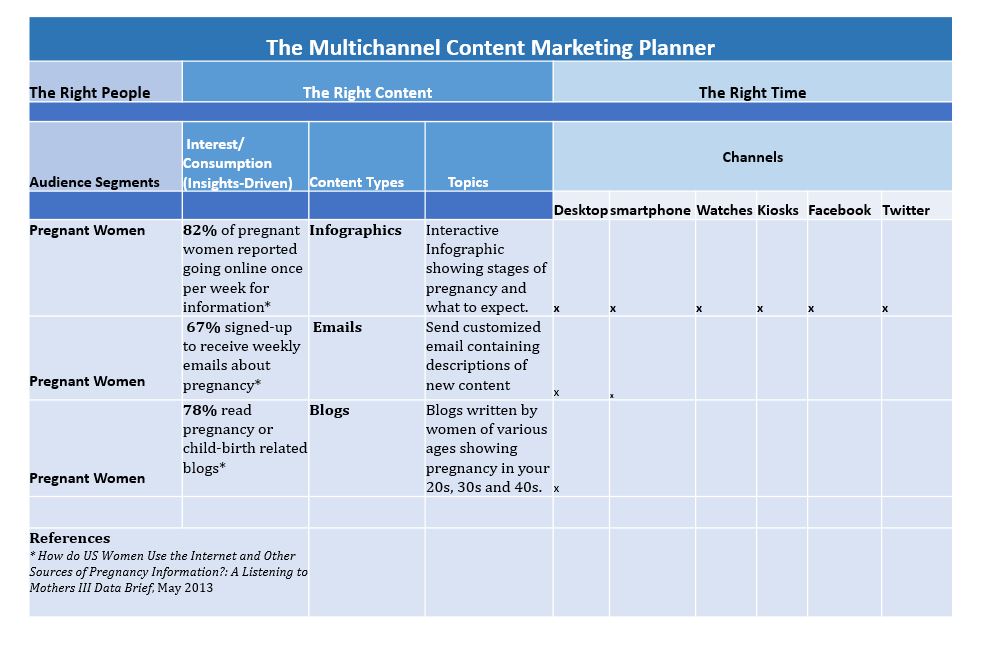Author: Jodi Harris / Source: Content Marketing Institute

Ready or not, 2018 is on its way. If you happened to catch our collection of content marketing predictions for the upcoming year, you may think you’re in for a bumpy ride. There are lots of big changes to manage on the horizon – the increasing impact of voice-activation, AI automation, and tighter consumer data regulation among them.
But just because you likely need to work a bit harder to keep your content marketing maturity level on track with your competition and on pace with innovation doesn’t mean you can’t take advantage of a few shortcuts along the way. Once again, we’ve updated the toolkit of some of CMI’s best tips, checklists, and templates. They can help you tackle your usual tasks with less effort, so you can conserve your time and energy to prepare for whatever surprises 2018 might bring.
First and foremost – follow the framework
When I have a tough job to do, I like to break it down into smaller, more manageable parts and tackle one at a time. For example, the basic requirements for successful, scalable content marketing operations can be divided into the five core elements outlined in our latest Content Marketing Framework:
- Your purpose and goals: The “why” – why you are creating content and what value you expect it to provide
- Your target audience: The “who” – the one category of consumers your content can benefit most and what’s in it for them
- Your brand story: The “what” – what specific, unique, and valuable idea you will build your content assets around (This includes your overarching content mission, as well as the topical areas you will focus on in pursuit of that mission.)
- Your process: The “how” – how you will structure and manage your operations, as well as how you will enable, activate, and apply specific content tactics in pursuit of your goals
- Your measurement: The “how much” – how you will gauge your content’s performance, evaluate its business impact, and identify opportunities for improvement
With this construct in mind, let’s start from the very beginning.
Building your strategic foundation
Everything you do as a content marketer should flow from a deliberately constructed content marketing strategy. Think of it as building a road map of the content experience you intend to cultivate and how it will connect your business with your audience – and move both closer to achieving their goals.

But before you draw your map, you first need to solicit buy-in from stakeholders that will make your content journey possible. If executives don’t understand what content marketing is, how it works, and what results they can reasonably expect to achieve, you’ll be hard pressed to get their support when there are obstacles to be cleared, let alone their permission to take necessary risks on the road to success.
The DIY tool: This checklist is part of the article How to Win Your Battle for Content Marketing Buy-in [50+ Stats]. It can help you prepare a compelling case and assure stakeholders that your content marketing program will be well positioned to reach its goals.
With stakeholder support, you can move on to develop the core building blocks of a content-first strategy.
Establish your goals
If your content program could only achieve one goal, what would it to be? Bring in more sales leads? Introduce your business to new audiences? Drive greater loyalty, satisfaction, and evangelism among your existing customers? Content marketing can help your business achieve all these aims, and more; but it works best when you focus on one challenge at a time.
The DIY tool: Answer the goal-related questions CMI founder Joe Pulizzi shares in his simplified strategy approach to quickly define the strategy that your content efforts should support.
Develop your mission statement
A content marketing mission or core content strategy statement is a summary of your company’s reason for creating content, and the priorities and perspectives it will uphold in pursuit of that mission. Not only can it help identify and characterize the unique value your company will provide through its content, it’s also a critical component for governing your storytelling efforts and guiding your decision-making throughout the life of your program.
The DIY tool: Fill in the blanks of Meghan Casey’s core content strategy statement template to home in on the unique value your content can provide – to both your audience and your business.

Pinpoint your audience
When you think of your content recipients using broad, catch-all terms like “audience” or “targets,” it’s easy to lose sight of their needs as people – unique, complex individuals, each with a unique complement of needs, interest, preferences, and behaviors.
That’s where audience personas come into play. These composite sketches help characterize key segments of your audience in terms of who they are, what their relevant challenges and concerns are, and what role they are likely to play in their company’s purchasing process. Without personas to guide your decisions, you are more likely to revert to creating content around what you know best (your products and company) instead of around the information your audience is actively seeking.
You probably already collect some of the information you need to build a robust persona – basic demographic and geographic data. But if you want your content to truly resonate, consider incorporating any insights gathered on your persona’s communication preferences, past behaviors, goals, daily challenges, and purchase motivations. These can include:

The DIY tool: This quick and dirty guide will walk you through the basics of creating easy, yet actionable content marketing personas.
Map it out
Once you’ve determined your mission, target audience, and strategic goals and objectives, the next step is to document your decisions so everyone in your organization understands the priorities and challenges involved and can execute on each effort with a shared purpose.
The DIY tool: While there’s no one-size-fits-all template for developing a thorough strategy, the one-page strategy plan shared by George Stenitzer should help you hit the ground running.
Creating an actionable editorial plan
Repeat after me: “Content marketing works best when you plan for its success.” You need an operational plan that outlines all the insights, actions, people, and procedures necessary to take your content marketing program from a lofty strategic ideal to a fully functional and productive content marketing engine.
Characterize the customer’s journey
Providing your audience with a rewarding experience is the point of content marketing. It’s essential to understand their consumption preferences, engagement habits, and pain points – as well as how those needs may change over time – if you expect your content to deliver the kind of value that will help you forge deeper, longer-lasting customer relationships.
The DIY tool: Applying the information from your audience personas to this customer journey map template (originally shared by Marcia Riefer Johnston, along with a walk-through of the mapping process) will help identify the content topics, story ideas, formats, and channels that best suit your audience’s needs – now, and as they progress through each stage of their buyer’s journey.

Once you have identified the path your customers are looking to take, you want to map the specifics of how to enable your content to facilitate that journey – including your editorial processes, guidelines, and tactics, as well as the team resources to get it all done.
Align your content ideas with your business goals
To reach the right people at the right time, on the right channels, and drive them to act, you need accurate audience data to inform your publishing plans, as well as the content ideas you will execute to deliver on their needs.
The DIY tool: This multichannel content marketing planner created by strategy expert Lisa Copeland is an easy-to-use, easy-to-share way to capture data and insights that lead to strategically aligned content creation.

Establish and empower your team
When you are cultivating a newsroom-like environment – one capable of consistently producing high-quality content on multiple channels and platforms on an ongoing basis – it’s essential that you enable your team to operate as effectively and efficiently as possible. Make sure everyone involved understands your organization’s expectations, and has the required skills and know-how to fulfill them.
The DIY tool: Use this team framework developed by Michele Linn to identify the skills, mindset, and cultural considerations to account for when running a successful content marketing program.

Set roles and responsibilities
Because there are so many moving parts to effective content marketing creation and distribution, each team member needs a clear understanding of all the tasks involved in the process, who is…
Audience Team
The digital audience insights you need to build, manage and market to your digital audiences.

